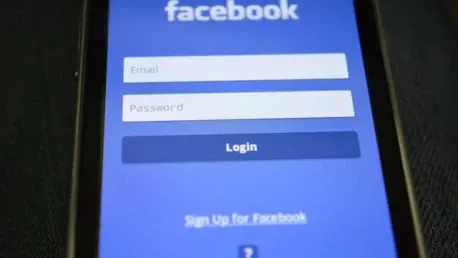In today’s digital age, the security of our online accounts and personal data is more critical than ever. With the rise of cybercrimes, traditional passwords are increasingly seen as inadequate. This article delves into the future of online authentication, examining whether passwords are becoming obsolete and exploring emerging alternatives that promise greater security and efficiency.
The Inherent Risks of Passwords
Security Weaknesses
Passwords have long been the cornerstone of online security, but their effectiveness is waning due to the evolving nature of cyber threats. Weak and easily guessable passwords, such as “123456,” remain alarmingly common. Despite efforts to educate users on creating strong passwords, many continue to reuse simple passwords across multiple accounts, creating significant security vulnerabilities. This habit has made it easier for cybercriminals to breach accounts using techniques like brute force attacks and credential stuffing, merely because users fail to adhere to best practices. To compound the issue, password fatigue has set in, as people grow weary of memorizing and managing a multitude of passwords.
Financial Implications
The financial repercussions of cybercrimes are staggering, with data breaches, ransomware attacks, and hacking incidents racking up costs for organizations around the globe. For instance, the average cost of a data breach in the ASEAN region reached $3.23 million in 2024, emphasizing the economic burden such incidents levy on businesses. These financial burdens underscore the urgent need for more robust authentication methods. Beyond direct costs, companies also face indirect expenses, including loss of customer trust, reputational damage, and compliance fines which could further strain their resources. Companies must continually invest in advanced security measures to mitigate such risks, but even these can falter if foundational elements like passwords remain weak.
Individual Monetary Losses
Individuals are not immune to the fallout from cyber threats. Hacking and data breaches involving government and banking sites can lead to direct monetary losses and other damages for individuals. The compromised data can have far-reaching consequences, affecting personal finances and privacy. A single security lapse could result in identity theft, fraudulent transactions, and a lengthy recovery process to restore one’s financial standing. Additionally, the emotional stress and breach of privacy that accompany such incidents further illustrate the inadequacy of traditional password systems. As more personal information is stored online, the importance of robust and reliable authentication methods becomes increasingly evident.
Emerging Alternatives to Passwords
Passkeys
Passkeys are gaining traction as a secure alternative to traditional passwords due to their enhanced security features. Utilizing public key cryptography, passkeys eliminate the need for individual usernames and passwords, providing a more seamless and secure experience for users. Stored securely on the user’s device, passkeys offer enhanced security and usability, reducing the risk of hacking, keylogging, and phishing. Since passkeys are unique to each device and service, they create an additional barrier against unauthorized access, preventing the widespread damage that typically follows a compromised password.
The usability of passkeys also contributes to their growing popularity. They streamline the login process by allowing users to bypass the cumbersome steps associated with password management. This reduction in complexity not only strengthens security but also improves user experience, leading to higher adoption rates. As technology continues to evolve, passkeys may become a standard feature in digital authentication, offering a much-needed upgrade from traditional passwords.
Multi-Factor Authentication (MFA)
Multi-Factor Authentication (MFA) adds an extra layer of security by requiring additional verification steps beyond just a password, making unauthorized access significantly more challenging. Examples include one-time pins (OTP) received via SMS, call, or email, as well as security tokens and security questions. MFA significantly enhances account security by making it harder for unauthorized users to gain access, even if they manage to obtain a user’s password. The dual or multi-layered verification process ensures that access is granted only to the rightful owner, thereby mitigating the risk of cyber attacks.
The adoption of MFA has been steadily increasing among businesses and individual users alike due to its effectiveness in thwarting cyber threats. Moreover, MFA solutions have become more user-friendly, integrating seamlessly with various platforms and devices. As cybersecurity concerns continue to grow, the implementation of MFA stands out as a practical and essential measure to protect sensitive information and secure digital interactions.
Biometric Security
Biometric authentication methods, such as fingerprints, facial scans, and voice recognition, are becoming more prevalent due to their reliability and convenience. These methods offer improved security over traditional passwords by relying on unique physical characteristics that are difficult to replicate. Governments and private institutions are increasingly adopting biometric security to safeguard sensitive data and ensure secure access to services. Biometric systems provide a higher level of assurance that the user accessing an account is indeed who they claim to be, eliminating the risk of password-based fraud.
Moreover, advancements in technology have significantly enhanced the accuracy and efficiency of biometric systems. Integration with everyday devices, such as smartphones and laptops, has made biometric authentication more accessible to the general public. This widespread adoption is a testament to the potential of biometrics in redefining online security practices. As the technology continues to mature, it holds the promise of becoming a cornerstone of digital authentication, reducing our reliance on outdated password systems.
Password Managers
While not a complete alternative, password managers help users create and store complex passwords securely. These tools auto-fill passwords, reducing the need for memorization and allowing for stronger, unique passwords across different accounts. Password managers can be a valuable asset in enhancing online security by simplifying the process of managing multiple credentials. By encouraging the use of complex and varied passwords, these managers mitigate the risks associated with password reuse and improve overall account security.
Password managers also offer additional features, such as breach alerts and secure sharing, further enhancing their utility. Despite their benefits, widespread adoption remains a challenge due to user hesitancy and a lack of awareness. Education and awareness campaigns are essential to promote the use of password managers and instill best practices in digital security. As users become more informed about the advantages of password managers, their integration into everyday life will likely increase, providing a transitional step towards more advanced authentication methods.
Challenges in Adopting New Authentication Methods
User Familiarity with Passwords
The entrenched habit of using passwords presents a significant barrier to adopting new authentication methods. Many users, especially those who have been using the same passwords for years, may resist the switch to alternatives like passkeys or password managers. This resistance stems from a combination of convenience and familiarity, as users are often reluctant to change practices that have been ingrained over time. Overcoming this resistance requires education and awareness campaigns to illustrate the benefits of new authentication methods and emphasize the risks associated with traditional passwords.
Behavioral change is a gradual process, and users need to be guided through the transition with clear and persuasive messaging. Organizations should provide support and resources to help users understand and adopt new security measures. By highlighting the advantages of enhanced security and ease of use, these campaigns can foster a positive perception of new authentication methods, encouraging users to embrace change.
Resistance from Older Users
Older individuals may be less inclined to change their ways and adapt to new technologies. Despite ongoing reminders and educational efforts, many still resort to writing down passwords in notebooks, finding newer technologies frustrating and challenging. Addressing the needs and concerns of older users is crucial for the successful adoption of new authentication methods. Tailored educational programs and simplified onboarding processes can ease the transition for this demographic, ensuring they are not left vulnerable to cyber threats.
Designing solutions that cater to the preferences and limitations of older users can significantly improve adoption rates. By offering intuitive interfaces, step-by-step guides, and personalized assistance, technology providers can make new authentication methods more accessible and less intimidating. Successful implementation depends on understanding and addressing the unique barriers faced by older users, fostering an inclusive approach to cybersecurity.
Compatibility Issues
Legacy systems and older devices may not support newer security updates, leading to compatibility challenges that hamper the adoption of advanced authentication methods. Companies may be hesitant to invest heavily in upgrading their systems to accommodate new authentication methods, particularly when dealing with extensive and complex infrastructures. Ensuring compatibility and providing support for older systems is essential to facilitate a smooth transition towards more secure authentication methods.
Organizations should conduct thorough assessments to identify compatibility issues and develop strategic plans for gradual system upgrades. Collaboration with technology providers to offer backward-compatible solutions can also alleviate transitional challenges. By prioritizing compatibility and adopting a phased approach, companies can modernize their security infrastructures without disrupting ongoing operations, paving the way for wider adoption of advanced authentication technologies.
The Path Forward
Embracing Change
The shift away from traditional passwords requires a collective effort from individuals, organizations, and technology providers. Embracing change and adopting new authentication methods is crucial for enhancing digital security. Education and awareness campaigns can help users understand the benefits of these new methods and encourage their adoption. As cyber threats evolve, fostering a proactive approach to security becomes imperative.
Investing in Technology
Investing in technology and infrastructure to support new authentication methods is essential for staying ahead in the cybersecurity landscape. Organizations must prioritize upgrading their systems and ensuring compatibility with emerging security technologies. This investment will pay off in the long run by reducing the risk of cyber threats and enhancing overall security. Robust digital frameworks not only protect sensitive data but also build consumer confidence and trust.
Collaboration and Innovation
In our modern digital world, safeguarding our online accounts and personal information has never been more crucial. With the surge in cybercrimes, it’s become apparent that traditional passwords may no longer suffice. This growing concern raises the question of whether passwords are on their way to becoming obsolete. As cyber threats evolve, so does the need for more robust security measures.
This brings us to the exploration of new alternatives for online authentication. Innovations such as biometric verification, including fingerprint and facial recognition, are gaining traction. Multi-factor authentication (MFA), combining something you know (like a password) with something you have (like a phone) or something you are (like a fingerprint), offers enhanced security.
Additionally, technologies like blockchain and artificial intelligence are being leveraged to create more secure authentication processes. These advancements not only promise to make our online experiences safer but also aim to improve efficiency and ease of use. As we look to the future, it is clear that the landscape of online security is set to change, possibly rendering traditional passwords a thing of the past.









